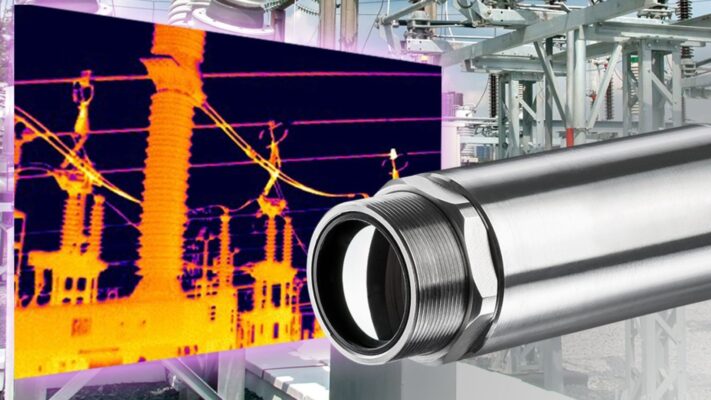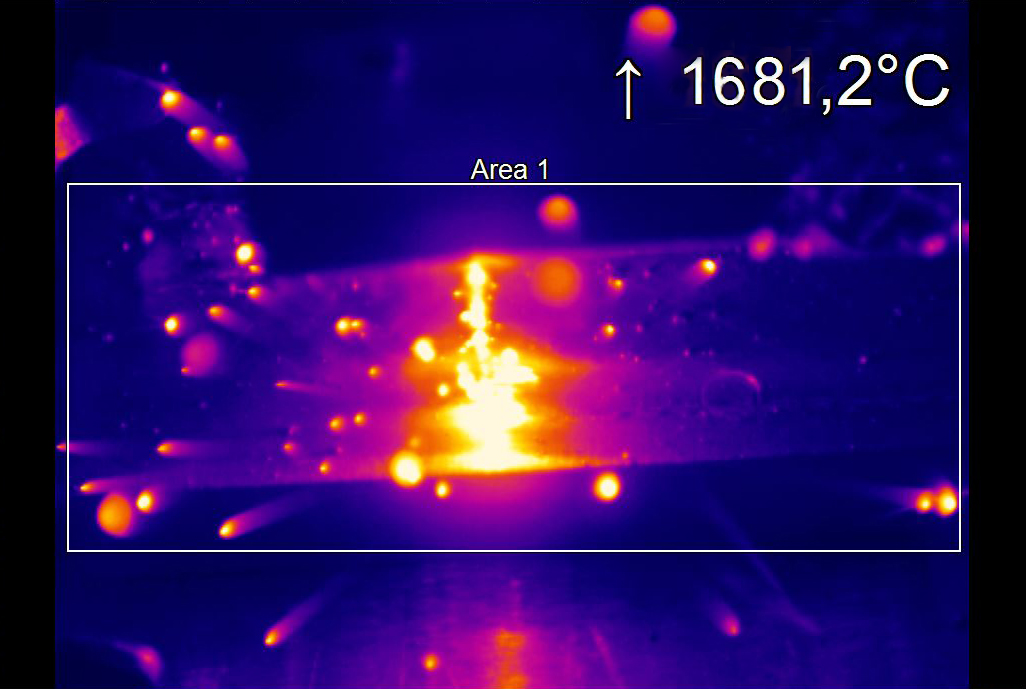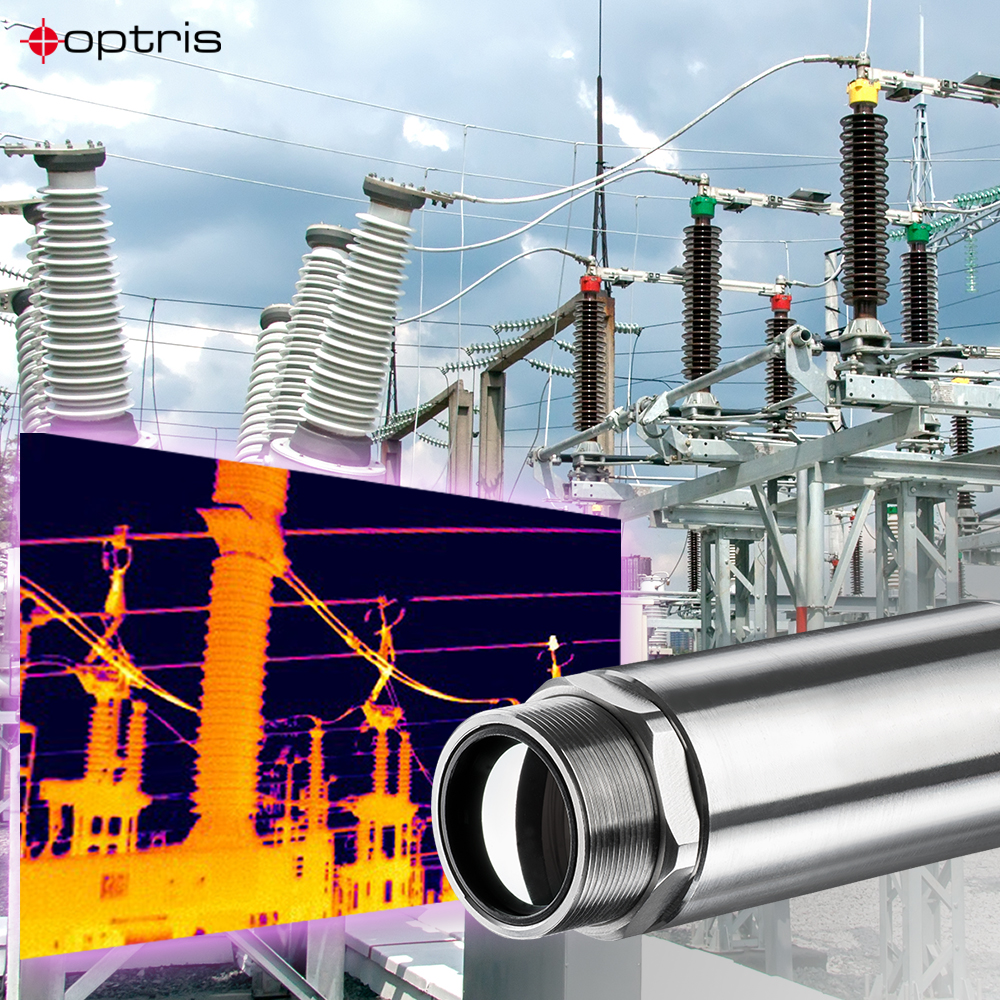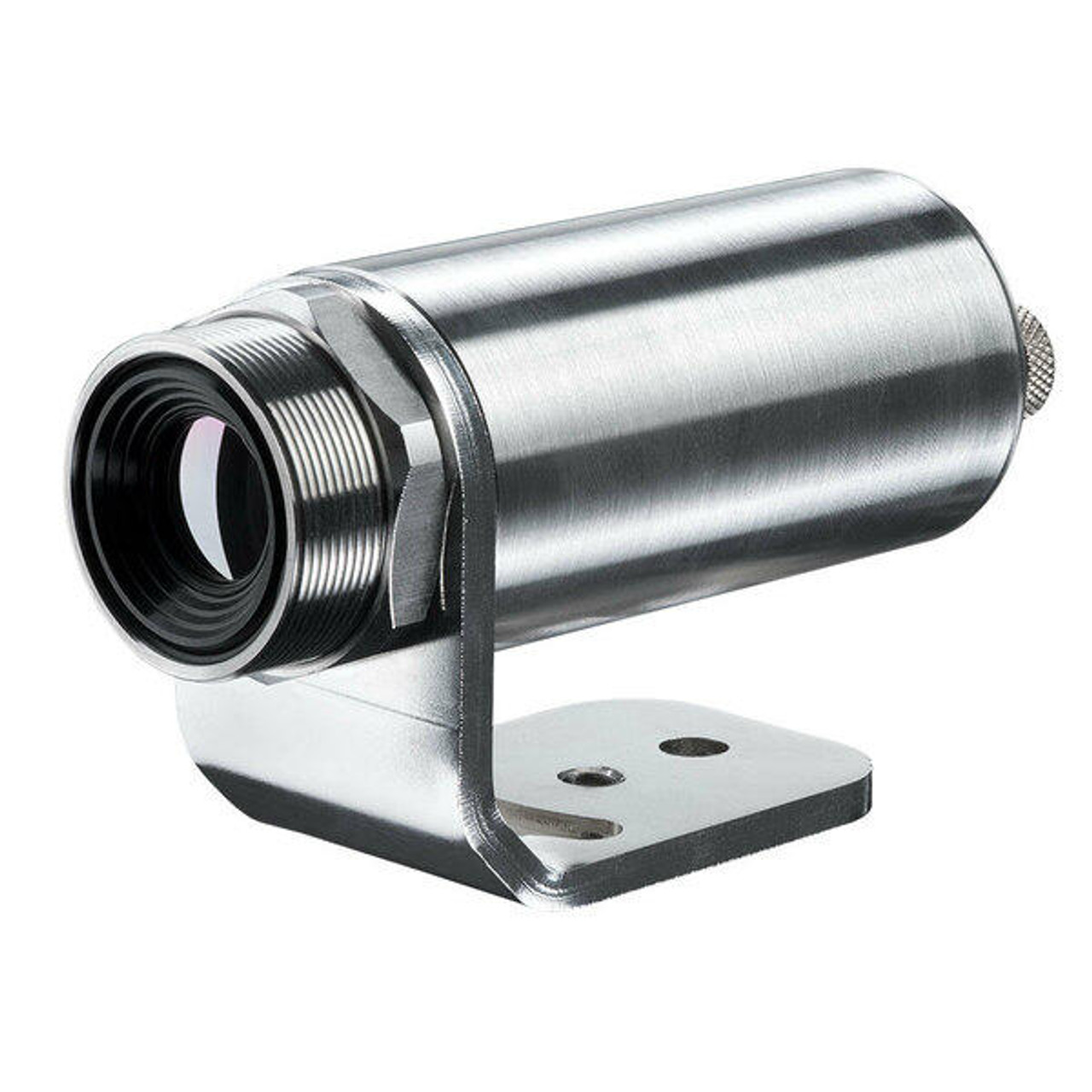How Does an Infrared Thermometer Work?
A Comprehensive Guide to IR & Laser Thermometers
IR thermometers are typically used in hazardous environments, such as high-temperature or dangerous applications, due to not needing to come into contact with the measured object. But how does an infrared thermometer work?
They detect and measure infrared radiation, the levels of which indicate how hot or cold an object is. As an object gets hotter, it emits more infrared radiation which falls on the infrared spectrum that is invisible to the human eye.
We offer an extensive selection of high-quality infrared thermometers suitable for a wide variety of industrial applications. Our handheld, portable IR thermometers allow fast, non-contact temperature measurement for improved efficiency and safety.
Browse our online catalogue of infrared thermometers, or get in touch with our team to get a product matched for your specific requirements.
Send An EnquiryIndustrial Thermal Imaging Cameras
Industrial Thermal Imaging Cameras
Optris PI400i/PI450i High Resolution Thermal Imaging Cameras
Industrial Thermal Imaging Cameras
Industrial Thermal Imaging Cameras
How Does an Infrared Thermometer Work?
An infrared thermometer has a lens that focuses infrared radiation and directs it through the thermometer to a detector called a thermopile.
The thermopile converts the incoming infrared radiation into an electrical signal that the thermometer displays as temperature units. This allows the user to detect the temperature of an object from a distance.

What is Infrared Radiation?
Infrared radiation is emitted by all objects at differing levels based on the temperature. The hotter an object, the faster the movement of its molecules, which gives off more infrared radiation.
We cannot see this radiation but we can feel it as heat. Examples are the heat from sunlight, a fire, or a radiator.
What is an IR Thermometer?
An infrared thermometer (IR thermometer) captures infrared radiation given off by objects. This reveals heat patterns, which are used in applications like night vision and thermal imaging.
IR thermometers allow temperature measurement from a distance without contacting the target object.

How Do Laser Temperature Sensors Work?
Infrared sensors detect reflected infrared energy and convert it into an electrical signal displayed as a temperature reading. The sensor adjusts for ambient temperature changes to give an accurate reading.
How Does an Infrared Thermometer Detect Temperature?
The temperature gun captures infrared radiation from a surface and converts it into a temperature measurement based on the radiation level. The surrounding temperature is accounted for to ensure an accurate reading.
Key Components of a Temperature Gun:
- Infrared sensor – Detects infrared energy emitted from the target and converts it into an electrical signal
- Optics – Focuses the infrared energy onto the sensor
- Display – Shows the converted temperature measurement
- Laser pointer – Allows accurate aiming of the thermometer
- Microprocessor – Processes the electrical signal into a temperature reading
Is Infrared Accurate on a Thermometer?
Accuracy depends on the distance-to-spot ratio which is the maximum distance for accurately measuring a target surface area. A higher ratio means a longer distance but a bigger surface area.
Industrial IR thermometers have an error of around ±1°C which is fine for most applications. Medical IR thermometers require ±0.1°C accuracy to detect human temperature changes.
How Does a Temperature Gun Work?
A handheld infrared thermometer measures temperature remotely using infrared radiation without contact. The radiation is focused onto a detector, converted into a temperature, and displayed digitally.
This allows fast, non-destructive checks across industrial and residential settings. Battery-powered models enhance portability and safety.
Which is the Best Portable Thermometer?
When it comes to finding the best portable infrared thermometer, it largely depends on your specific needs and budget.
The Optris P20 LT general-purpose handheld infrared thermometer is suitable for many applications with a wide measurement range of 0 to 1300°C. It allows for precise temperature control in various spots, including refractory linings of melting troughs, as well as in many other places.
Whereas, the Optris MS handheld infrared thermometer is a great value entry-level model with limited functions. It’s a small device used for infrared temperature measurements.
How Does a Laser Thermometer Work?
Laser thermometers are infrared thermometers. The laser simply aids the aiming of the device.
What’s the Difference Between Medical and Industrial IR Thermometers?
Medical IR thermometers require exact ±0.1°C accuracy to detect small human temperature changes from 32°C to 42.5°C.
Industrial models measure much more extreme temperatures where an accuracy of +/-5°C is an accepted variable unsuitable for medical temperature readings.
Best Infrared Thermometer for HVAC, Manufacturing and Other Industries
At Process Parameters, we are a leading distributor of Optris thermal imaging cameras and infrared thermometers supplying to companies within the UK, Ireland and worldwide. Take a look at our IR cameras or contact us for a free quote.
Optris offers a diverse range of products designed to cater to various applications and industries. Their optical thermometers are equipped with state-of-the-art sensor technology, allowing for precise temperature measurement and detailed thermal imaging.
These cameras are used in fields such as industrial process control, condition monitoring, research and development, building inspections, and non-contact temperature monitoring.
Send us an email at sales@processparameters.co.uk, call 01628 778788, or complete our online enquiry form.
Send An EnquiryIndustrial Thermal Imaging Cameras
Industrial Thermal Imaging Cameras
Optris PI400i/PI450i High Resolution Thermal Imaging Cameras
Industrial Thermal Imaging Cameras
Industrial Thermal Imaging Cameras
FAQs About How Does an Infrared Thermometer Work
How accurate are industrial infrared thermometers?
Industrial infrared thermometers typically have a precision of around ±1 to ±1.5°C. While not as exact as medical thermometers, this level of precision suits most industrial temperature monitoring needs. Moderate accuracy is a trade-off that allows industrial IR thermometers to measure over a wide temperature range.
What are common applications of IR thermometers in industrial processes?
Infrared thermometers have diverse industrial applications for non-contact temperature checks, such as:
- Detecting hot spots in firefighting equipment and clothing
- Verifying temperatures of mechanical or electrical systems
- Monitoring heater and oven temperatures for calibration
- Tracking materials in processes that heat or cool products
- Identifying issues in HVAC systems
- Scanning moving parts or hazardous areas safely
Their non-contact, rapid measurement capabilities make infrared thermometers versatile for supporting quality, safety, and reliability in manufacturing.
Related Temperature Gun Articles:
- What is Condition Monitoring?
- Can a Thermal Camera See Through Walls?
- 5 Best Infrared Temperature Sensors
- How Does a Thermal Imaging Camera Work?
- How Accurate are Infrared Thermometers?
- Using a Thermal Camera to Detect Heat Loss
- Choosing an Infrared Pyrometer
- What is a Pyrometer?
- What is Thermal Scanning?
- Temperature Sensors for Food Production
- Temperature Sensors for Petrochemical, Oil and Gas
- Top Infrared Temperature Sensor Manufacturers





